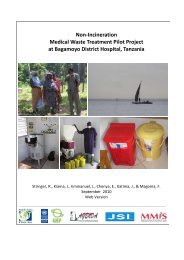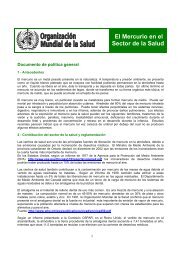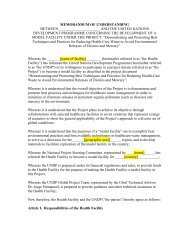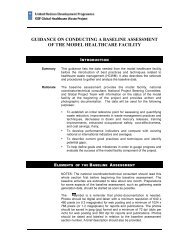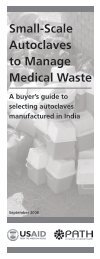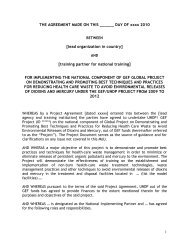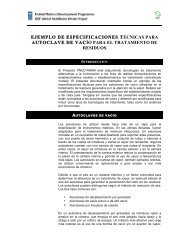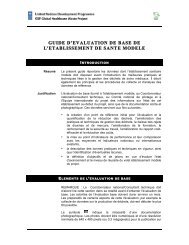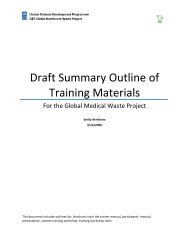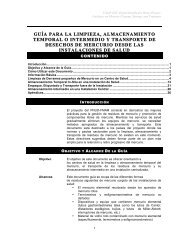Latvia
Latvia
Latvia
Create successful ePaper yourself
Turn your PDF publications into a flip-book with our unique Google optimized e-Paper software.
Health systems in transition<br />
<strong>Latvia</strong><br />
•<br />
•<br />
192<br />
hospitals (emergency departments);<br />
the CEDM, a state-run, specialized medical service that covers only those<br />
cases when a CEDM specialist is called in by one of the hospitals, once<br />
it has been established that the institution’s own efforts and resources are<br />
insufficient to save the life of the patient. The surgical brigades of the CEDM<br />
come to help their colleagues in various district hospitals. They perform<br />
complicated spinal, neurosurgical and other urgent operations in hospitals,<br />
help to transport patients to the hospitals, and perform the crucial functions<br />
to sustain life while transporting victims. In cases in which the patients,<br />
their relatives or employers wishing to receive more qualified medical care<br />
call in the specialists of the CEDM themselves, the State does not cover the<br />
expenses. To ensure the rights of the patients to freely choose and receive<br />
highly qualified medical care, the CEDM also offers services paid by the<br />
patient and provides specialized medical care to patients both within and<br />
outside the borders of <strong>Latvia</strong>.<br />
An individual can receive emergency care services at 43 medical institutions<br />
contracted by SCHIA (hospitals have structural units of EMA teams or<br />
EMA services). Emergency care is available 24 hours a day. In Riga there<br />
are specialized emergency teams (intensive care, cardiological, psychiatric,<br />
children’s intensive therapy, etc.); elsewhere, there is usually one doctor and<br />
doctor’s assistant and the driver; in rural areas, there is a doctor and doctor’s<br />
assistant (in nine districts of <strong>Latvia</strong>), or two doctor’s assistants and the driver<br />
(in 17 districts of <strong>Latvia</strong>). EMA is provided to people whose life or health is<br />
in a hazardous and critical condition by specially prepared (trained, equipped)<br />
individuals with a relevant qualification in medicine.<br />
In case of emergency, one must call an ambulance (03 or 112), or go to the<br />
emergency reception of a hospital. Transport by ambulance is free of charge<br />
for patients.<br />
Key standards for ambulance services include:<br />
• responding to 75% of calls within 15 minutes in cities and towns (in reality<br />
from 4 to 15 minutes, on average 8 minutes);<br />
• responding to 75% of calls within 25 minutes in rural areas (in reality from<br />
15 to 45 minutes, on average 22 minutes).<br />
The majority of primary emergency care involves sudden illnesses and acute<br />
conditions (64.8% of cases in 2003 and 63.0% in 2004). The second largest<br />
part of such care involves traumas and accidents (21.1% in 2003 and 22.4% in<br />
2004) (HSMTSA 2005, HSMTSA 2006).<br />
Hospitals which have structural units of EMA teams and EMA services are<br />
contracted by the SCHIA, which finances these services from the health care<br />
budget. The contracts include:





